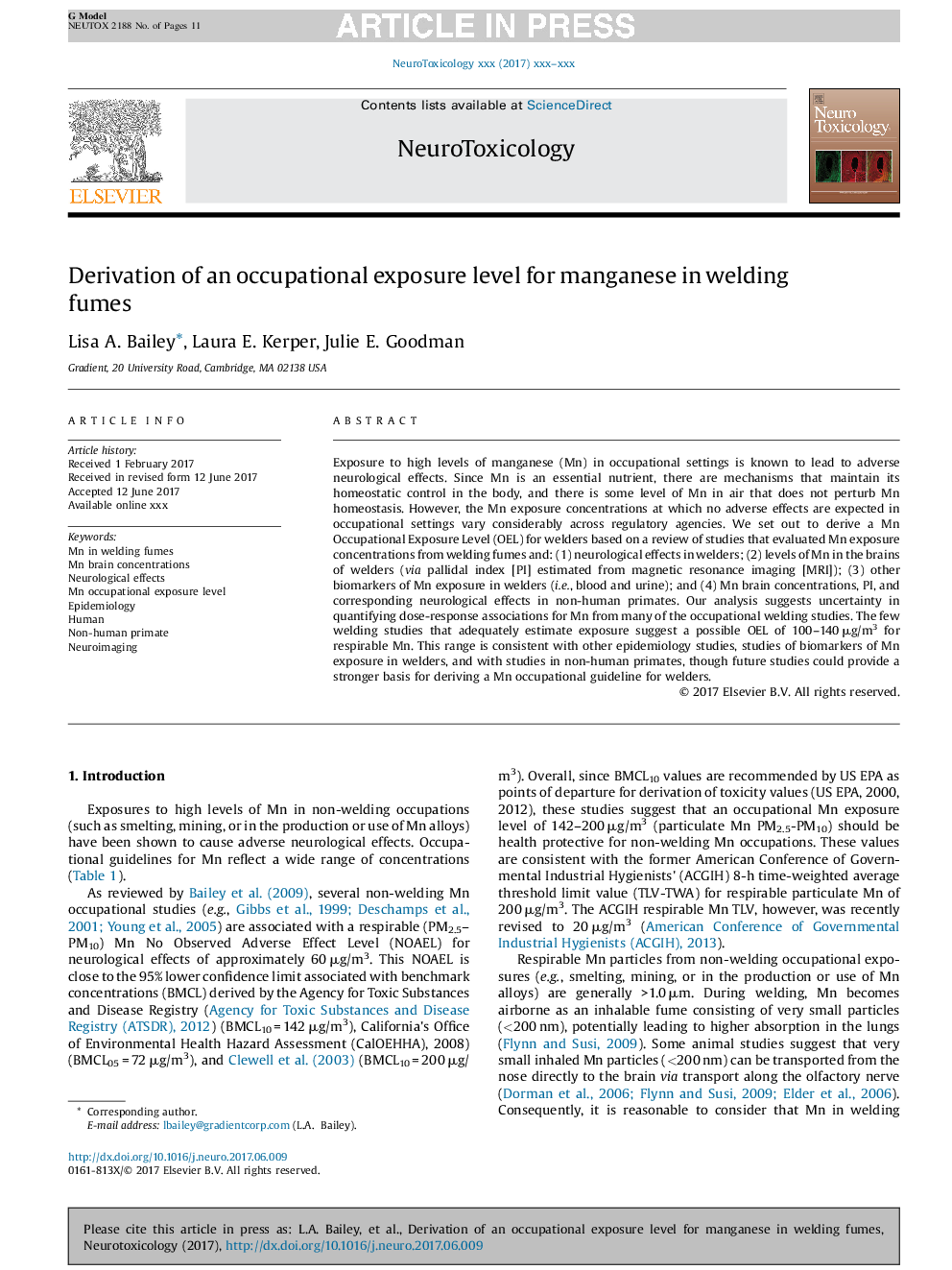| Article ID | Journal | Published Year | Pages | File Type |
|---|---|---|---|---|
| 8550373 | NeuroToxicology | 2018 | 11 Pages |
Abstract
Exposure to high levels of manganese (Mn) in occupational settings is known to lead to adverse neurological effects. Since Mn is an essential nutrient, there are mechanisms that maintain its homeostatic control in the body, and there is some level of Mn in air that does not perturb Mn homeostasis. However, the Mn exposure concentrations at which no adverse effects are expected in occupational settings vary considerably across regulatory agencies. We set out to derive a Mn Occupational Exposure Level (OEL) for welders based on a review of studies that evaluated Mn exposure concentrations from welding fumes and: (1) neurological effects in welders; (2) levels of Mn in the brains of welders (via pallidal index [PI] estimated from magnetic resonance imaging [MRI]); (3) other biomarkers of Mn exposure in welders (i.e., blood and urine); and (4) Mn brain concentrations, PI, and corresponding neurological effects in non-human primates. Our analysis suggests uncertainty in quantifying dose-response associations for Mn from many of the occupational welding studies. The few welding studies that adequately estimate exposure suggest a possible OEL of 100-140 μg/m3 for respirable Mn. This range is consistent with other epidemiology studies, studies of biomarkers of Mn exposure in welders, and with studies in non-human primates, though future studies could provide a stronger basis for deriving a Mn occupational guideline for welders.
Related Topics
Life Sciences
Environmental Science
Health, Toxicology and Mutagenesis
Authors
Lisa A. Bailey, Laura E. Kerper, Julie E. Goodman,
